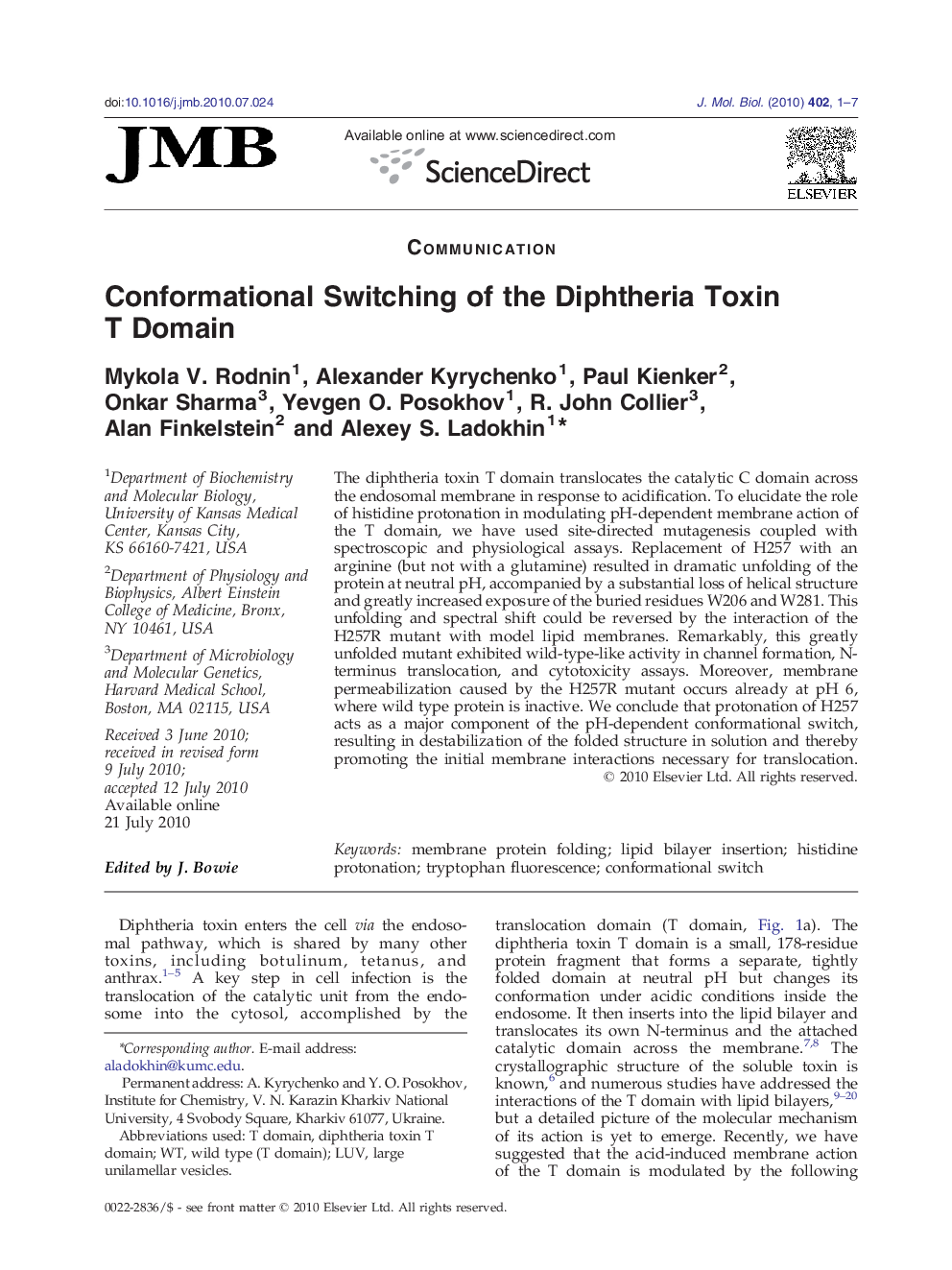| Article ID | Journal | Published Year | Pages | File Type |
|---|---|---|---|---|
| 2185575 | Journal of Molecular Biology | 2010 | 7 Pages |
The diphtheria toxin T domain translocates the catalytic C domain across the endosomal membrane in response to acidification. To elucidate the role of histidine protonation in modulating pH-dependent membrane action of the T domain, we have used site-directed mutagenesis coupled with spectroscopic and physiological assays. Replacement of H257 with an arginine (but not with a glutamine) resulted in dramatic unfolding of the protein at neutral pH, accompanied by a substantial loss of helical structure and greatly increased exposure of the buried residues W206 and W281. This unfolding and spectral shift could be reversed by the interaction of the H257R mutant with model lipid membranes. Remarkably, this greatly unfolded mutant exhibited wild-type-like activity in channel formation, N-terminus translocation, and cytotoxicity assays. Moreover, membrane permeabilization caused by the H257R mutant occurs already at pH 6, where wild type protein is inactive. We conclude that protonation of H257 acts as a major component of the pH-dependent conformational switch, resulting in destabilization of the folded structure in solution and thereby promoting the initial membrane interactions necessary for translocation.
